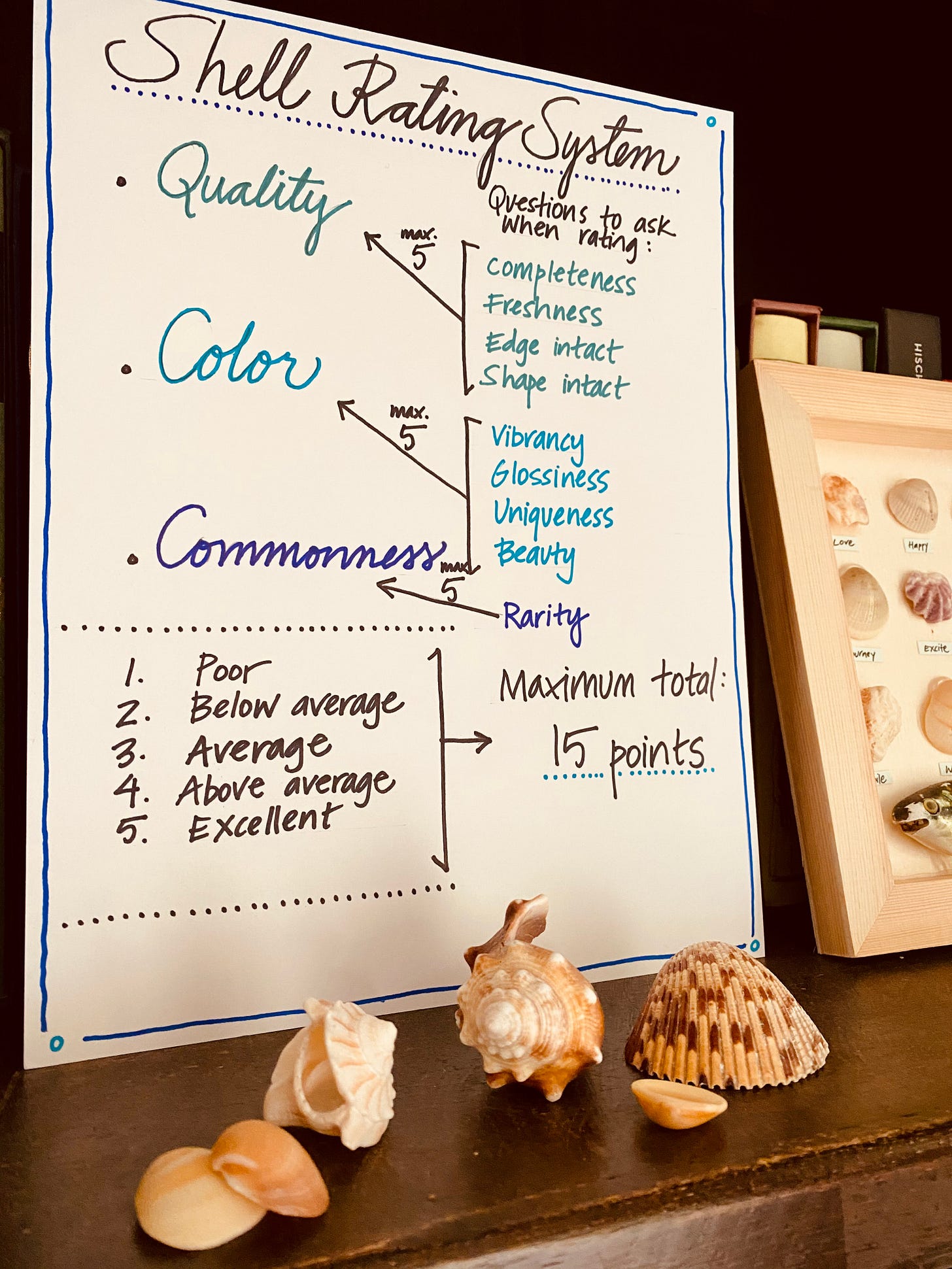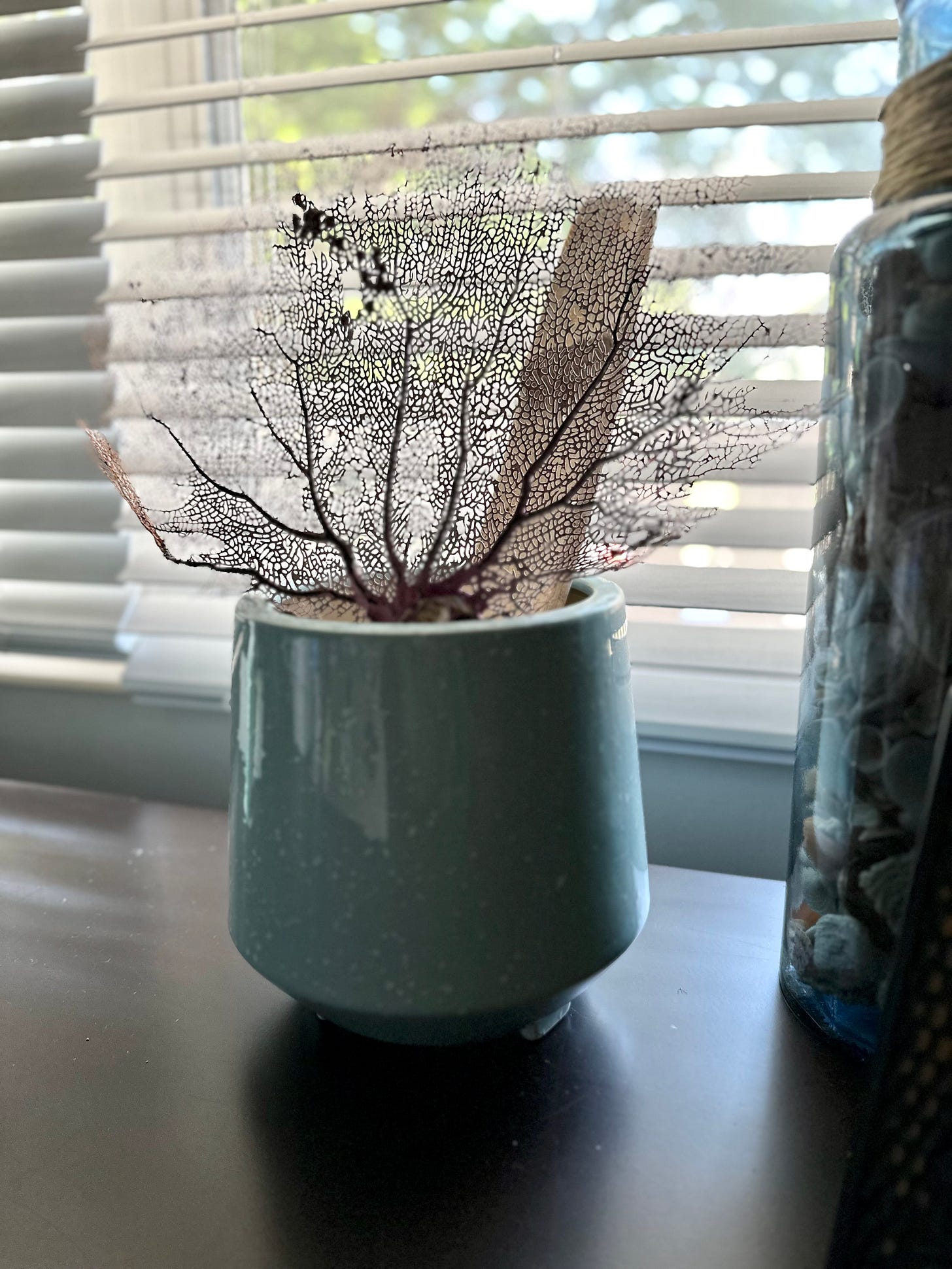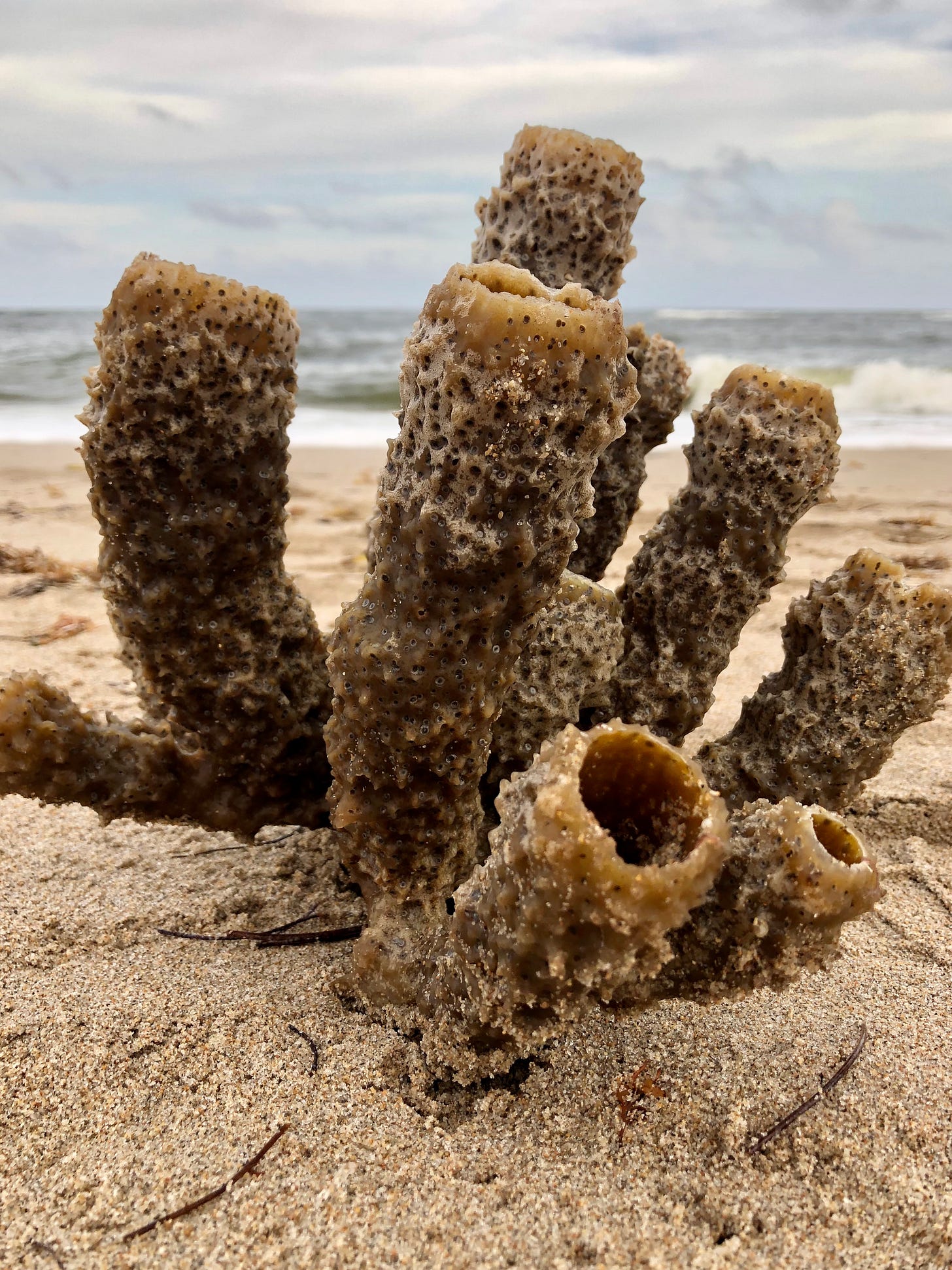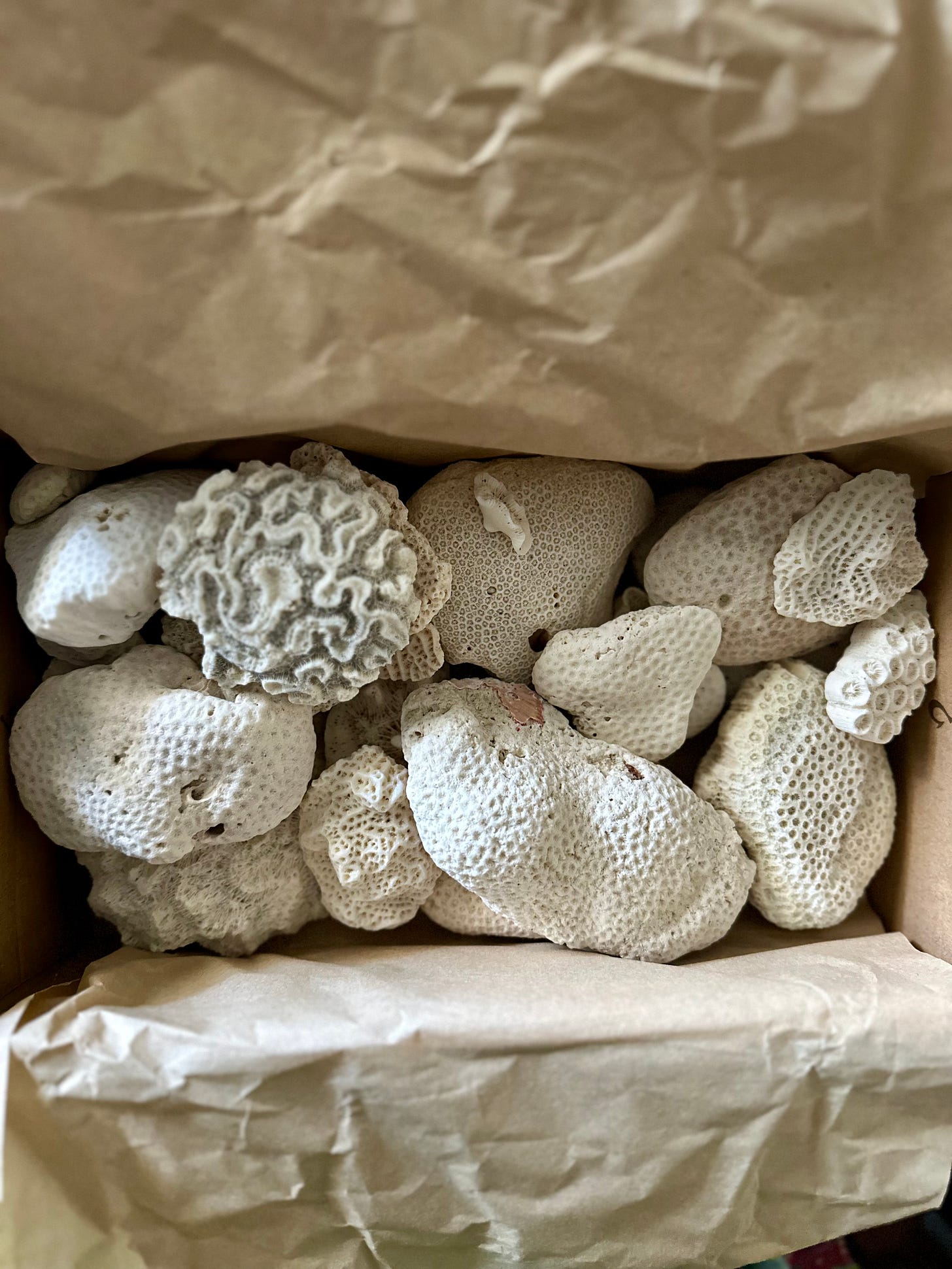Well — how much does a chunk of coral cost? Yeah, I’m sure you wake up every morning asking yourself that question! To properly answer that question we need to understand where it came from and where it’s going, so to speak.
It’s like this:
The coral chunk in the photo above was found by my brother-in-law on Pompano Beach in Florida. He chose to not take it home with him so it fell into our happy hands and is now on display in our kitchen. It’s a perfect piece of brain coral as far as I can tell, and I’m no expert. It’s esthetically very pure. Prettier than the ones often seen in certain high end interior design stores, if one walks into such stores that is (I rarely do).
After moving to Southern Florida I quickly became one of those seashell collecting women. Oh, you don’t know about them? Go to Instagram and look up #seashells and you’ll find us. This was a childhood mega-dream mixed with an adulthood enthusiasm for treasure hunting things from the sea. Finland has very dull-looking seashells. Clams and such. But once in a while, as a child, a friend had a couple of tropical seashells or coral pieces that I could hold and study. I loved those moments!
The feel of a seashell is cool and smooth, and a little mysterious. So when I got the chance to collect my own beautiful seashells I really went all in. We drove to the beach at least twice per week and let out delighted sounds each time we found a somewhat acceptable shell. We brought home buckets and bags of shells, and washed them and displayed them and admired them and loved them.
We drove to the Gulf Coast to collect shells, and rose before sunrise to claim the best ones. Yes, it is a fierce mad dash on the beaches before sunrise! Not quite clawing and screaming but imagine Olympic speed walkers on the beach. (Have you seen that episode in Malcolm in the Middle when his dad got into speed walking? That’s what it looks like on the beaches when shellers get there in the mornings.) Passive aggressive smiles are exchanged to wish each “good morning.” Or sending one’s offspring to run ahead to grab the large conchs, they’re faster, those kiddos, than grown ups with aching backs from yesterday’s stooping in the shallows! We came home with more seashells and washed them and displayed them. We bought a shelf especially dedicated to all seashells!
And — ran out of space to display them. That’s when the shell archive was formed. Boxes of seashells with location and year labels were neatly stacked on an industrial shelf in our guest room. There they rest, in new dark cardboard and plastic enclosures instead of on the bottom of the dark sea. This is when a thought came to me.
What if I would sell some of these seashells? I have plenty of them, thousands by now, and people who live elsewhere might love owning some seashells. Like I did when I lived in an arctic location. So I set up an Etsy page. You could buy shells in bulk or pieces of shell art that I created. Here’s an example.
I think I sold one thing. I quickly understood that everyone else had set their shipping cost set to zero or some other ridiculously low cost — and I had no chance of competing with them. So I was stuck with my massive collection of seashells. But onwards!
At some point we developed the Shell Rating System [see diagram below]. It was a result of us bringing home way too many poor quality seashells. We needed a strict(er) system right there on the beach, to help us reject the bad ones. A scientific ranking system that would be as objective as possible when rating something that sand, water, and nautical animals had beaten and eaten and finally kicked out of the deep blue sea onto dry land! And a little nod to the role play gaming days, perhaps, with those categories and points?
So there we were, on the beach, muttering to ourselves in the wind: “This one is a quality 3 with a vibrancy of 4, don’t you think? This is a keeper.” And then plunk into the shell collection bag. Yes, you can buy those bags online of course. As you can guess, this rating system didn’t last long before we forgot to use it, but I still keep the chart on our refrigerator door as a memory of the most intensive shell collecting days.
I also dragged home other nautical things from the beach. Sea fans, for example. I took great care to only collect specimen that was dead and permitted to be picked up. After storms one can find spectacular sea fans and sponges that have beached. I collected a lovely purple sea fan that I still have on my desk. It maintained its shape and color quite well even after drying.
Sponges are a bit tricky. If recently beached they can still have a hundred small ocean dwelling sea slugs or worms inhabiting them, which can cause a stinky and somewhat scary surprise at home when rinsing out the loot. I have a few sponges in my collection but prefer to enjoy them on location instead. I have seen sponge collectors on the beach and everyone has their own preference and niche.
And then, coral.
Outside the Florida coast sits one of the world’s most beautiful coral reefs. So they say. I don’t scuba dive but I’ve seen the pictures. This is why chunks of coral strand on the beaches here. These pieces are dead. Some are very old, even fossilized. The living coral is in the sea. I have an affinity for coral. I look for pieces that are pure and have a nice amount of patterns. I use some chunks as paper weights or, as with the large brain coral piece at the top of this post, as interior decoration. They look beautiful.
Some online sellers charge off-putting sums for coral frags (fragments), and a few days ago I saw the most hyper-inflated asking price for a piece of coral that I had ever seen. Check this out.
There is a website called 1stDibs which I happened upon by accident. I think I was actually searching the term cabinet of curiosities (the name of this Substack) to look for examples of what collectors used to keep in the historical cabinets of curiosities. And something caught my eye.
An old collection of seashells! Gorgeous and mysterious and lovely. There are many more boxes like these and they range around $200 each. I looked around a bit more and then I saw it. A chunk of coral.

For $675 you can almost fly to Florida from anywhere in the United States and pick your own brain coral specimen. Right? It’s listed as a 20th Century or earlier piece, so perhaps it has gained value by sitting and collecting dust in an expensive home during that time before being passed on to the next owner via purchase. The fact that this coral piece is listed on a high end website plays a huge role. On EBay and Etsy you will find close to identical pieces for $30 dollars plus shipping.
Many will feel a genuine sense of superiority when the $675 piece of coral sits on a stack of coffee table books versus the chunk of coral they found on the beach whilst on vacation in Florida. But that is not enough. It will only exude more importance when shown off on Instagram to all the followers and tagged to the vendor for approval. It will raise the dopamine addiction and fuel the positive feedback loop.
This is a sign of the age of decadence in which we are currently living.
Thank you for reading! Press the heart button and write a comment!
Please consider dropping a few bucks in the Venmo below. This will help me spend more time writing and sharing with you.











Is it bad, negative, doomerist of me to wonder about the environmental effect of human beings picking beaches clean of dead coral and empty shells? Is there no way that those things support the ecology of oceans even in their decay?
People aren't allowed to take samples of white sand out of White Sands Nat'l Monument anymore because the [number of visitors per year] x [even a small sample of sand] = the whole monument cleared in a few years.